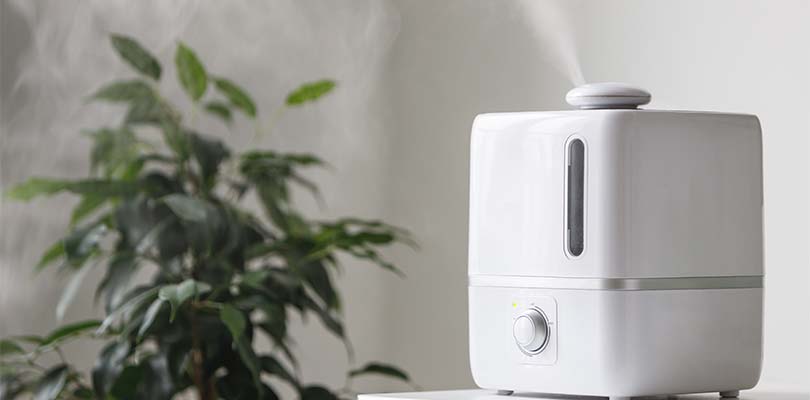
Photo Credit: amit erez / istockphoto.com
Asthma Triggers
Those who live with asthma have some degree of inflammation in their airways all the time, although the symptoms aren’t always in flare. When the inflammation around the airway muscles leads to constriction, or inflammation within the airways produces lots of mucus, your relatively controllable condition can take a turn for the worse.
Unfortunately, plenty of things can increase inflammation, but the good news is that there are just as many ways to avoid and treat the inflammation before you experience a dangerous asthma attack. Be aware of these potential asthma triggers, and see your doctor if any of them are interfering with your quality of life.
1. Pollen
Those who live with asthma have some degree of inflammation in their airways all the time, although the symptoms aren’t always in flare. When the inflammation around the airway muscles leads to constriction, or inflammation within the airways produces lots of mucus, your relatively controllable condition can take a turn for the worse.
Unfortunately, plenty of things can increase inflammation, but the good news is that there are just as many ways to avoid and treat the inflammation before you experience a dangerous asthma attack. Be aware of these potential triggers, and see your doctor if any of them are interfering with your quality of life.

Photo Credit: Saharrr / istockphoto.com
2. Smoke
Cigarette smoking is definitely one of the worst asthma triggers out there, probably due to the hundreds of irritating chemicals in each cloud of smoke. Obviously, the first step is to quit smoking, and since second-hand smoke is just as dangerous, don’t let people smoke around you in a closed space. Keep in mind that that campfire smoke and wood burning fireplaces are also bad for your lungs – in fact, they give off just as many carcinogens as second-hand smoke – so it’s best to stay away from any smoky fires, no matter how charming they may seem.

Photo Credit: Lilun_Li / istockphoto.com
3. Pets
Furry and feathered pets shed what’s known as dander – tiny specks of skin – that can cause reactions in people who are susceptible. This dander can come from many animals, but the main culprits include rodents, birds, dogs, and cats (feline dander is actually the worst of them all for many people). On top of this, the animal’s saliva and natural oil secretions can trigger asthma symptoms, so it’s not enough to keep your pets brushed and bathed. If your pet is an asthma trigger, the easiest preventative measure is to find the pet a new home; if that’s not an option, be sure the pet stays out of the bedroom and off the furniture.

Photo Credit: Szabolcs Takacs / istockphoto.com
4. Dust
Keeping a clean home is crucial when you’re living with asthma, since dust build-up can bring on an attack. Dusty surfaces point to dust mites, very tiny bugs that feed on skin particles and excrete an allergy-causing substance that can irritate the nose and throat, and inflame your airways. They live in every home, and while you probably can’t get rid of each and every mite in the house, you can eliminate a lot of the risk to your lungs simply by keeping your bed and bedroom clean and fresh. Change bedding frequently, swap out your down pillow for a hypoallergenic foam pillow, and get rid of dust-collecting clutter from your sleeping space.

Photo Credit: pixelbrat / istockphoto.com
5. Mold
Mold is particularly problematic for asthma sufferers, because you don’t need to touch it to feel the effects. Since it’s a type of fungus, mold reproduces by releasing spores into the air to float far and wide, inside or outside. The spring and fall are bad times for outdoor molds, but you could find it growing in your cut grass, stagnant water, garbage bins or composters all year round. Inside the house, be mindful of damp basements, bathrooms, dehumidifiers, and the cracks and crevices of old houses. Luckily, careful, regular cleaning and fixing any ventilation issues can go far to preventing irritating mold growth.
There are different types of asthma and each have their own triggers and symptoms. Here you will learn more about them and how to treat them.

Photo Credit: yodiyim / istockphoto.com
6. Viruses
Certain viral infections may spark an asthma episode, especially if they target the respiratory system. The flu virus can be particularly threatening, though the common cold and other everyday illnesses can cause an attack, and even make you more sensitive to certain other asthma triggers. Make handwashing a priority, and it’s a good idea to get your flu shot every year. Talk to your doctor about the best approach to treatment if you do get sick – some drugs could trigger asthma symptoms, or make them worse.

Photo Credit: Ryhor Bruyeu / istockphoto.com
7. Cold
Many asthma sufferers have a difficult time in cooler seasons, partly because they tend to stay cooped up with indoor allergens more often, but also because cold air can shock the airways and provoke an attack. One explanation for this event is that cold air is typically much dryer than warm air, and that will dry out the mucus membranes (your body’s natural defenses) in your lungs. If you’re venturing into the cold, cover the lower half of your face with a scarf: breathing through the fabric will warm and humidify the air before it hits your lungs.

Photo Credit: RTimages / istockphoto.com
8. Additives
Foods rarely cause asthma attacks; it’s often an underlying allergy that is provoking the respiratory symptoms. However, there are a few suspect food additives that may interfere with your asthma management, including sulphites, benzoates, monosodium glutamate (MSG), and salicylates. Sulphites are the most troublesome, affecting between 5% and 10% of asthmatics, so pay attention to your reaction when you drink wine, beer, juices, and soft drinks (the major sulfite sources). Additives are listed on nutrition labels in various ways, and beware of ingredients followed by a number – these are artificial colors, preservatives, and flavor enhancers.

Photo Credit: kjekol / istockphoto.com
9. Exercise
Activity that increases your heart rate will also increase your breathing, and if the air is dry, that irritate your airways. But exercise can also narrow your airways, causing you to wheeze, cough, and gasp for breath. This condition is known as exercise-induced bronchoconstriction, and typically occurs when your general asthma management plan is falling short. Instead of giving up on exercise, talk to your doctor about tweaking your current treatment plan: you may need some different preventative measures, and an update to your asthma action plan to quickly quell an attack.

Photo Credit: itsmejust / istockphoto.com
10. Emotions
Strong emotions can affect your body as much as your mind. For asthmatics, a sudden streak of excitement or a crying spell can lead to very fast and uncontrolled breathing (hyperventilation), and that can trigger your airways to react. Luckily, managing your emotions and managing your respiratory health go hand-in-hand; consider taking a meditation class, incorporating gentle yoga, and finding good visualization exercises that help you center your breath and calm your mind at the same time. If you find that your changing emotions are too much to control, talk to your doctor about adapting your medication to help stay on an even keel.
Asthma symptoms brought on by environmental triggers can be unpredictable, even if you’ve reacted to the allergen or situation before. While you may have had a mild reaction to a certain food, type of plant, or other allergen in the past, there’s no guarantee that your reaction will be as mild next time, so it’s important to get your asthma under control, and always have a rescue inhaler when you’re around asthma triggers.
Read more about avoiding triggers over the holiday season over at NewLifeOutlook.
Knowing the symptoms of asthma is important because it makes you aware of those serious signs and symptoms that require urgent treatment in the hospital.








